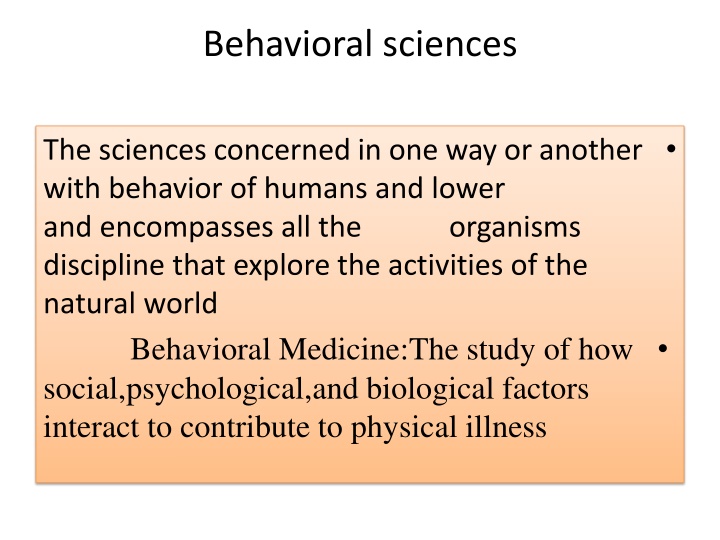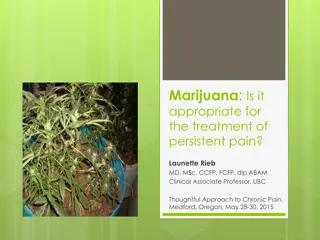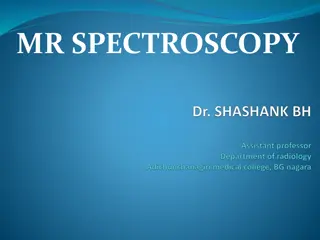
Behavioral Sciences: Neurochemistry, Neurotransmission, and Regulation
Explore the fascinating world of behavioral sciences, including behavioral medicine, neurochemistry, neurotransmission, and the regulation of neurotransmitters. Discover how social, psychological, and biological factors interact to influence physical well-being, and learn about the crucial role of neurotransmitters in emotions, perception, and behavior.
Download Presentation

Please find below an Image/Link to download the presentation.
The content on the website is provided AS IS for your information and personal use only. It may not be sold, licensed, or shared on other websites without obtaining consent from the author. If you encounter any issues during the download, it is possible that the publisher has removed the file from their server.
You are allowed to download the files provided on this website for personal or commercial use, subject to the condition that they are used lawfully. All files are the property of their respective owners.
The content on the website is provided AS IS for your information and personal use only. It may not be sold, licensed, or shared on other websites without obtaining consent from the author.
E N D
Presentation Transcript
Behavioral sciences The sciences concerned in one way or another with behavior of humans and lower and encompasses all the discipline that explore the activities of the natural world Behavioral Medicine:The study of how social,psychological,and biological factors interact to contribute to physical illness organisms
Behavioral neurochemistry Certain chemical substances may influence mood,thought,&action Nueronal membranes play an important role in both interneuronal &intraneuronal processes ion channels:are the electrical means of neuronal transfer involves the action potential. Recepotors:the chemical means of information transfer across neurons Receptors are protiens that bind to specific chemical Substances,which results in in the eventual trigering of specific processes within neuron.
Receptors are important for the action of neurotransmiters,neuromodulators,&hormons Interaneuronal transport is by cyclic nucleotides,calcium,&phosphatidylinositol(2nd messengers Neuroregulators; are chemicals that carry informations between neurons.they include: neurotransmitters,neuromodulators,&neurohormons. Neurotransmitters are either exitatory or inhibitary or both. Exitatory NTs are glutamate &aspartate. Inhibitary NTs are GABA &glycine. Dopamine &Ach may function either way
Neurotransmission Emotions,perception,thinking, movement and psychopathology are believed to result from interactions and imbalances among these messengers in the brain The three major classes of neurotransmitters are the biogenic amines (monoamines), amino acids, and peptides. receptors can recognize specific neurotransmitters. When the presynaptic neuron is stimulated, the neurotransmitter is released, travels across the synaptic cleft and acts on receptors on the postsynaptic neuron
Regulation of neurotransmitters The concentration of neurotransmitters in the synaptic cleft is closely related to mood and behavior. After release by the presynaptic neuron, neurotransmitters are removed from the synaptic cleft passively by simple diffusion into local tissue Active removal is accomplished by reuptake by the presynaptic neuron or by degradation by enzymes such as monoamine oxidase or acetylcholinesterase
evidence indicates that not only lowered availability of neurotransmitters, but changes in the number, or affinity (sensitivity) of receptors for specific neurotransmitters (neuronal plasticity) and the efficiency with which a neurotransmitter signal is changed into a message, can regulate neuron responsiveness Increased or decreased availability of specific neurotransmitters is associated with common psychiatric disorders Normalization of neurotransmitter availability by pharmacologic agents is associated with symptom relief
Biogenic amines The biogenic amines, or monoamines, include catecholamines, indolamines, ethylamines, and quaternary amine Dopamine Dopamine, a catecholamine, is involved in the pathophysiology of Parkinson's disease, mood disorders, the conditioned fear response , and the rewarding nature of drugs of abuse . Dopamine has also been implicated in the pathophysiology of schizophrenia and other psychotic disorders
Phenylalanine is converted to tyrosine by the action of phenylalanine hydroxylase.Tyrosine is converted to L-dopa by & action of &enzyme Tyrosine hydroxylase(this is the rate-limiting step in synthesis of all major catecholamines i.e dopamine,norepinephrine,&epinephrine) L-dopa is converted to dopamine by & enz. decarboxylase. Metabolism by MAO-A ,MAO-B,& COMT to homovanillic acid (HVA)
Whereas the D2receptor subtype seems to be the major site of action for traditional antipsychotic agents, the D1and D4subtypes are implicated in the action of the newer, atypical antipsychotics The three major dopaminergic tracts in the brain are the nigrostriatal tract, the tuberoinfundibular tract, and the mesolimbic-mesocortical tract . The nigrostriatal tract is involved in the regulation of muscle tone and movement and its degeneration is seen in Parkinson's disease
Treatment with traditional antipsychotic drugs, which block postsynaptic dopamine receptors receiving input from the nigrostriatal tract, can result in parkinsonism-like symptoms. Dopamine acts on the tuberoinfundibular tract to inhibit the secretion of prolactin from the anterior pituitary. Blockade of dopamine receptors by antipsychotic drugsleads to elevated prolactin levels and side effects like breast enlargement, galactorrhea, and sexual dysfunction.
The mesolimbic/mesocortical tract is associated with the manifestations of psychosis and may have a role in expression of emotions because it projects into the limbic system and prefrontal cortex. Hyperactivity of the mesolimbic tract is associated with the positive symptoms and hypoactivity of the mesocortical tract and with the negative symptoms of schizophrenia .
Another important dopaminergic pathway in the brain runs from the ventral tegmental area to the nucleus accumbens . This pathway becomes activated following use of some drugs of abuse, suggesting that it is involved in the rewarding and addictive nature of these agents
Norepinephrine Norepinephrine, plays a role in mood, anxiety, arousal, learning, and memory has mainly neuromodulatry effects ,so it enhances locomotor responses to dopamine,play a role in various physiological functions including the sleep-wake cycle ,pain,anxiety ,organism s orientation to enviroment as in unexpected sensory stimuli,and arousal Dopamine is converted to norepinephrine by the enzyme dopamine beta-hydroxylase Metabolism is by the same enzymes that metabolize dopamine to MHPG &VMA
Most noradrenergic neurons are located in nuclei in the upper brainstem; the most important of these is the locus ceruleus . NE is considered to be important in the genesis and maintenance of mood and may be related to mood and anxiety disorders(catecholamine theory of mood disorders states that reduced catecholamine activity in brain produce depression &higher activity levels with mania)
NE is involved in the pathogenesis of torsion dystonia,parkinson disease,Tourtte s syndrome ,ADHD,and akathesia Receptors:alpha 1 & 2 , beta 1&2. Reserpine &propranolol can cause depression.


